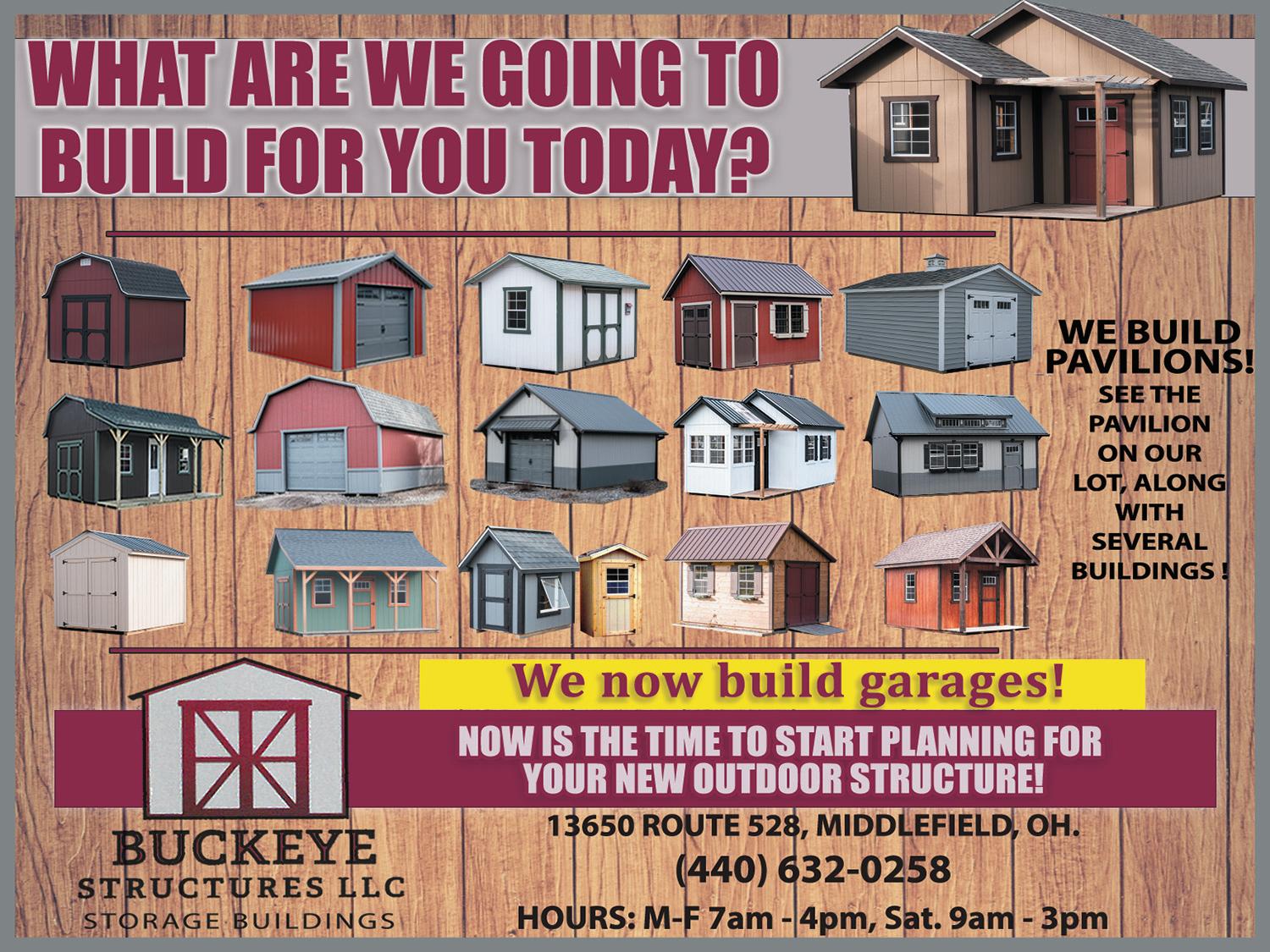




“Lite For Life, Illumination Beyond Expectation” is the motto of Electolite Lite for Life, the Chester Township-based leader in LED lighting maintenance technology.
For nearly four decades, owner Timothy “Sparky” Covert has provided residential and commercial lighting solutions in Northeast Ohio.
Here is what some satisfied customers had to say about the work Electolite did for them.
“Sparky has been doing our lights for the past eight years. Recently, we had all of our outdoor lighting at the police department changed by Electolite. These new lights come with a 25-year warranty with no cost for parts and labor.
“We are very happy with the professional way the installation was done; not to mention that our building looks fantastic.” — Bainbridge Township Police Chief Jon Bokovitz
“Electolite has maintained our lighting for several years now and more recently upgraded our Chardon location with all new LED lighting on our sign, flagpole, parking lot and building . . . Our Chardon location has taken on a whole new look, affording customers and employees excellent lighting for their security. We have realized better resolution in our surveillance system with the higher quality of light. Sparky pays attention to the smallest details.
“We are very pleased with the results of Electolite Company’s services. We are impressed with Electolite’s technicians and the top-notch equipment and vehicles, which always appear as though they were just driven off the car dealership’s lot.” — Donald R. Yert, Owner
“I have had the opportunity to work on several projects with Mr. Covert, on both a professional and personal level. His company was instrumental in converting over all of the exterior lighting around the Chester Township Police Department to LED and the results have been outstanding. The quality of the lighting, the craftsmanship and his employees are ‘top notch.’ I have had the occa-
sion to recommend the Electolite Company to others in the past and it is always without any hesitation.” — Former Police Chief Mark A. Purchase
“Since 2010, when we moved into our new building, Top Gun Supply has used your company exclusively for our lighting needs, inside and out. Over that time period, we have been very satisfied with your service and the professionalism of your employees. Electolite has been extremely responsive to service calls on our outdated lighting as needed. That kind of customer service seems to be rare in the commercial lighting and sign business.
“You recently recommended that we upgrade our lighting to all LED and we are very happy with the results. The lower power usage and extended life of this lighting is outstanding!” — Thomas Allen, President, Top Gun Supply LLC
“Sparky has made cost effective suggestions which have saved our company time and money. His ability to see the bigger picture operationally, while being mindful of safety and operational efficiencies are the reasons we continue to use the services of Electolite.
“We strongly endorse their services, skills, timeliness, and responsiveness to anyone in the market.” — Brian O’Donnell, President, Valley Truck Centers
“I have been working with Electolite for all of my parking lot and exterior building lighting work for approximately eight years. Tim is my sole provider of service for our lighting systems as he has provided fast, dependable, quality service for all of our needs.
“We are working towards some of the upgrades of our existing lighting that Electolite has brought to the table. We will have longer light life, less calls for service and energy savings while getting the maximum light available. I strongly recommend Electolite to any commercial application needing professional exterior lighting installation and repairs.” — Brent Fletcher, Director Facilities-Security, Mandel Jewish Community Center
Electolite is located at 8829 Mayfield Road, Chesterland. To reach Sparky, call 440729-5000.




MetRoCReative
Certain home renovation projects are more glamorous than others. A remodeled kitchen is sure to garner its share of “oohs and aahs,” while a newly paved driveway is much less likely to dazzle guests.
A gutter replacement is another job that might not have the wow factor. But fully functioning gutters are a must and can help to prevent potentially expensive roof damage. Gutters rarely draw attention, but homeowners can keep an eye out for signs that indicate gutters need to be replaced.
Various signs indicate it’s time to replace existing gutters. Homeowners should act promptly if any of the following signs arise, as poorly functioning gutters can make it hard for water to get into the downspouts, ultimately pushing it backward and likely underneath roof shingles, where the result can be costly water damage.
• Peeling paint
• Cracks
• Pooling water in the gutter
• Mildew in the gutter
• Water damage: Water damage on the gutter can be limited to certain spots and will be noticeable on the underside of the gutter
• Soffit damage
• Sagging gutters
• Detached gutters
• Rust
Many home improvements can be completed successfully by skilled do-it-yourselfers, but a gutter replacement is best left to the professionals. Homeowners who live in single-story homes may be able to replace gutters on their own, but the issues that can arise when gutters are not functioning at optimal capacity make this a job best suited to professionals, even in residences without high roofs.
Some gutters may be under a manufacturer’s warranty, so homeowners can check to see if their gutters qualify for a free upgrade. Experience is one of the best reasons to work with a professional gutter installation team. Experienced professionals can identify which gutters are the best fit based on a host of factors, including the pitch of the roof, local conditions and the size of the house. In addition, gutter installation requires the use of various tools that many DIYers may not have on hand, which can cut into the cost savings of doing the project yourself.
Homeowners also should not underestimate the challenges of working on ladders that are high up off the ground. Professionals are accustomed to such challenges, while DIYers may not be comfortable or used to climbing ladders with materials and tools in hand.
A gutter replacement is a worthwhile investment that can ensure rain water efficiently and effectively runs through gutters and away from the roof. Leaving this task to the professionals can ensure the job is done right.



Cleveland summers are hot & humid, but your home can be nice and cool, unless your air conditioner breaks down. To keep your cooling system running efficiently and effectively, yearly maintenance is a must.
Many homeowners are unaware when their cooling systems are running poorly and how much money is being wasted in the process. It not only costs more in energy bills but also can cause further damage to the system that could necessitate costly repairs and even replacement of your air conditioner.
“I can honestly tell you that the question I hear most often is, ‘Do I really need yearly maintenance on my cooling system?’” Steven Smylie, President of Smylie One, said. “Ever since I was a little guy going to work with my dad on Saturdays, the importance of regular air conditioning maintenance has been imbedded into my soul. In fact, my father constantly would tell me, with a broad smirk across his face, that if it weren’t for the constant influx of repairs due to the lack of maintenance, he wouldn’t be able to pay the bills. I understood, from that moment on, the benefits of a properly tuned up and inspected cooling system, as well as the consequences of not having one.”
All air conditioning manufacturers recommend that annual inspections and maintenance be performed by a factory-authorized company. At Smylie One, all our technicians are NATE Certified and we are a Bryant Factory Authorized Dealer. This

simply means that we are qualified to work on all systems that are installed and that we have the required number of staff that has passed NATE Certification testing.
These same manufacturers also have language in their warranties that say any damage to their units due to improper or negligent maintenance is not covered under their warranty. So, if nothing else, please be aware of this stipulation. It does not necessarily mean the manufacturer will not honor a warranty or that your warranty will be voided if you neglect maintenance, but why risk it?
To ensure every inspection is completed thoroughly, we developed the Pro-Max Tune-Up & Safety Inspection. This is one of the most thorough inspections in the industry.
“We’re not in it for the short term; we want to do a very complete and comprehensive professional tune-up. When we finish, our client’s equipment is working as efficiently as possible as it did day one,” Smylie said.
You can find more information about Smylie One at www.smylieone.com or give them a call at (440) 449-HEAT (4328).

The adage “there’s a lid for every pot” suggests that, even in relation to the real es tate market, there’s bound to be a buyer for every home on the market. Price is a signifi cant variable in the minds of potential buyers, but there are additional factors that can affect the impression people get of a given home.
Certain home features can tip the scales in favor of sellers. In fact, various renovations can help sell homes more readily. And these renovations need not cost a fortune. Putting a home on the market can be stressful, but these renovations may help it sell fast.
• A fresh coat of paint: Although paint ing is relatively inexpensive and a job that some do-it-yourselfers can tackle, it’s not a task relished by many. Painting is messy, it takes time, and requires moving furniture. In fact, prepping a room for painting often is the toughest component of any painting job. But fresh coats of paint can create a strong first impression. Choose a neutral color and get painting. Jennie Norris, chairwoman for the International Association of Home Staging Professionals, says gray is a “safe” color that has been trending in recent years.

• Minor bathroom remodel: Remove dated wall coverings, replace fixtures, consider re-glazing or replacing an old tub, and swap old shower doors for fast fixes in a bathroom. If there’s more room in the budget, replacing a tub, tile surround, floor, toilet, sink, vanity, and fixtures can cost roughly $10,500, says HGTV. You’ll recoup an average of $10,700 at resale, making a minor bathroom remodel a potentially worthy investment.
• Redone kitchen: The kitchen tends to be the hub of a home. This room gets the most usage and attention of any space, and it’s a great place to focus your remodeling attention. The National Association of the Remodeling Industry estimates that homeowners can recover up to 52 percent of the cost of a kitchen upgrade upon selling a home. Buyers want a functional and updated kitchen. Trending features include drawer-style microwaves and dishwashers, commercial ranges, hidden outlets, and even wine refrigerators.
• Updated heating and cooling system: Better Homes and Gardens reports that homeowners may be able to recoup 85 percent of the cost of new HVAC systems when they sell their homes. Heating, cooling and ventilation components are vital to maintain. You don’t want buyers to be taken aback by an older system, and many millennial buyers are not willing to overlook old mechanical systems.
• Fresh landscaping: A home’s exterior is the first thing buyers will see. If they pull up to a home with eye-catching landscaping and outdoor areas that are attractive yet functional, they’re more likely to be intrigued. Often buyers will equate a home that features an impressive exterior with upkeep inside as well. The American Nursery Landscape Association says the average homeowner may spend $3,500 for landscaping.
Improving a home’s chances to sell quickly and at a higher price often comes down to making smart improvements that catch the eyes of buyers.








truly create a space that may be worthy of a magazine spread.
An “out with the old, in with the new” mentality can extend to people’s visions for their homes. A home in need of repair or renovation can serve as a catalyst to take inventory of personal style and help make interior spaces reflect one’s unique vibe.
A living room can grow stale over time and often serves as a catch-call for clothing, blankets, gadgets, and other items. Upon recognizing a living room has seen better days, individuals may decide it’s time to give the space a new vibe. That transformation can start with these strategies.
Clutter frequently is the culprit behind a living room that may not give off the vibe individuals desire. As families grow and people add belongings, space may be at a premium.
Less is more has never been a more important concept. Remove extraneous items before purchasing new furniture or transitioning to a new design. You may even want to remove everything and start from scratch before reintroducing desirable elements to the space.
Some people are adept at decorating and designing spaces. But just as you wouldn’t perform your own medical procedures, you should leave jobs like interior design and renovations to the professionals. Hiring a professional interior designer and contractors can really bring a living room together in ways homeowners may have never imagined. These pros can build off of your ideas and
You may want to consider adding natural materials in the design to promote well-being. Eco-friendly furnishings, raw fibers and organic textures will create an environment from sustainable choices. Plenty of plants also can create a welcoming environment that helps you surround yourself with positive energy and the items you love.
One of the easiest ways to transform a room’s vibe is to utilize lighting. Change draperies to allow more natural light to shine in. Consider additional windows or skylights if yours is a particularly dark home. If you desire to create a more vivid or cozy ambiance, use a combination of accent, task and supplemental lighting in the space so there are no dim corners.
Create an industrial or urban vibe
Industrial-chic design celebrates the bones of a building. It’s what makes city lofts so appealing, with their exposed beams and brick. Even those who live in suburbia or out in the country can give a living room this look with subtle nods to the style. Unadorned windows, clean lines on furniture, oversized, gallery-style art, and metal accents can add touches of this popular look to your home.
Revamping a living room doesn’t have to be difficult. With an idea in place and some professional touches, an entirely new vibe can be achieved.

Gardening is a rewarding hobby that pays a host of significant dividends. Many people love gardening because it allows them to spend time outdoors, and that simple pleasure is indeed a notable benefit of working in a garden. But the National Initiative for Consumer Horticulture notes that gardening provides a host of additional benefits, including helping people get sufficient levels of exercise, reduce stress and improve mood.
With so much to gain from gardening, it’s no wonder people look forward to getting their hands dirty in the garden each spring.
As the weather warms up, consider these tips to help bring a garden back to life.
• Discard the dead weight. Winter can take its toll on a garden, even in regions where the weather between December and early spring is not especially harsh. Discard dead plants that have lingered into spring and prune any perennials that need it. Branches that fell during winter storms also should be removed at this point if they have not previously been discarded.
• Test the soil. Soil testing kits can be purchased at local garden centers and home improvement retailers. Such tests are inexpensive and can reveal if the soil needs to be amended
to help plants thrive in the months to come.
• Mulch garden beds. Mulching benefits a garden by helping soil retain moisture and preventing the growth of weeds. Various garden experts note that mulching in spring can prevent weed seeds from germinating over the course of spring and summer. That means plants won’t have to fight with weeds for water when the temperature warms up. It also means gardeners won’t have to spend time pulling weeds this summer.
• Inspect your irrigation system. Homeowners with in-ground irrigation systems or above-ground systems that utilize a drip or soaker function can inspect the systems be-
fore plants begin to bloom. Damaged sprinkler heads or torn lines can deprive plants of water they will need to bloom and ultimately thrive once the weather warms up.
• Tune up your tools. Gardening tools have likely been sitting around gathering dust since fall. Serious gardeners know that tools can be expensive, so it pays to protect that investment by maintaining the tools. Sharpened pruners help make plants less vulnerable to infestation and infection. Well-maintained tools like shovels and hoes also make more demanding gardening jobs a little bit easier, so don’t forget to tune up your tools before the weather warms up.
MetRoCReative
Homeowners know it can be tempting to go the do-it-yourself (DIY) route when starting a home improvement project. Home repairs and renovations can be costly, and the notion of saving money on such projects compels many homeowners to try their hand at home improvements. However, the DIY approach can be costly as well, and if things go awry, homeowners may end up with empty pockets and unfinished projects.
Online tutorials and advertisements for home improvement retailers can make DIY seem like a snap. However, there are potential pitfalls to consider that could make the ostensibly less expensive DIY route far more detrimental to the bottom line than home-
owners may recognize.
• Permits: Permits ensure work is done in accordance with local codes, which are designed to ensure the safety of residents and their neighbors. Licensed contractors know which permits are necessary for projects they’re hired to work on, and many even procure permits for their clients (homeowners are urged to read estimates and contracts to determine who will be responsible for acquiring the appropriate permits). DIYers may not know about local permits, and therefore go ahead with projects without procuring any. That can be harmful in the short- and long-term. In the short-term, a failure to procure the appropriate permits can make a home less safe and potentially lead to costly fines and necessitate a complete do-over of the project. In the long-term, homeowners who did
not secure the appropriate permits may not be given a certificate of occupancy (CO) when putting their homes on the market, which can make it very difficult to sell the home.
• Ancillary costs: The ancillary costs of DIY are not often noted in online tutorials. However, such costs can dramatically increase the amount of money DIYers shell out in order to complete projects on their own. Ancillary costs include but are not limited to the price of tools and equipment; disposal fees for materials that will need to be discarded; and the cost of permits. These costs are often included in estimates provided by contractors, but they’re easily overlooked by novice DIYers.
• Repairs: Even experienced contractors make mistakes, so DIYers, particularly novices, can anticipate making a few errors along the
way. Minor mistakes may not prove too costly, but more significant mishaps can quickly negate any cost savings associated with DIY renovations. The cost to fix DIY mistakes varies depending on the project, but a 2019 survey from Porch.com found that the average DIY mistake cost homeowners $310 and added five and a half hours to the overall time spent to complete a project. It’s worth noting the Porch.com survey was conducted prior to the dramatic increase in materials costs related to inflation in recent years. So it’s reasonable to assume that fixing DIY mistakes in 2024 could end up costing considerably more than a few hundred dollars.
Before diving in to DIY, homeowners may want to consider the real costs associated with forgoing professional experience in the potentially misplaced hopes of saving a few dollars.



MetRoCReative
Vibrant, green lawns can draw attention to any landscape. Many homeowners toil for hours each week to ensure their lawns are pristine, or invest in lawn care services to help maintain a yard if they do not have the time to do so themselves.
While many treatments can be applied to lawns to help them thrive, animal waste is not among them. Pet owners who aspire to have beautiful lawns will have to take a few extra steps to ensure lawns can persevere de spite the presence of furry companions.
There are many different types of grass, and some are more resilient than others. Tall fescue, Kentucky bluegrass, perennial ryegrass, and Bermuda grass are just some of the grass varieties that can capably handle pet traffic. If replacing the entire lawn is not possible, consider reseeding or addressing the areas that pets frequent.

solid waste immediately every time a pet goes outdoors, so designate a pet-friendly spot for potty time. Use fencing or a dog run to separate this area and help mitigate “land mines” all over the lawn. Fencing also can keep pets out of vegetable gardens and away from potentially toxic plants.
It may be tempting to cut the lawn short, particularly if dogs or cats like to nibble on longer blades of grass. But that approach could be doing the lawn a disservice. According to The Home Depot, letting the lawn grow to at least three inches will help keep moisture in the soil and prevent evaporation. That moisture will strengthen the roots, creating a healthier lawn for pets and people.
Various materials can be used in these high-traffic areas to minimize the sights and signs of pet traffic. Mulch or crushed stone can establish these pet highways and look like intended features.
Pet urine contains high levels of nitrogen, which can burn grass and turn it brown. It’s
When pets use the yard and rest on the lawn, you’ll need to eliminate products that can be harmful to them. Choose all-natural fertilizers and weed and pest preventatives.
If maintaining a lawn with pets seems like an uphill battle, consider swapping out your landscape with a variety of materials. Scale back on grass, and incorporate groundcover, hardscape materials like pea gravel, or extend the patio. Artificial turf also is an option, as it won’t brown and wither. Some turf products can even be quickly and thoroughly cleaned with water.
It can take some trial and error for pet parents to protect their lawns from the effects of having furry friends playing in the yard.

MetRoCReative
Individuals want a home that is welcoming and comfortable. Unfortunately many conditions that people find appealing also appeal to pests. Pests may be more problematic at certain times of year, such as when weather is extreme and pests like rodents or even raccoons seek refuge in a home. During times of year when temperatures are mild, certain insects may begin to hatch or swarm, becoming problematic around the home.
Some signs of pests taking up residence may be readily apparent, while others may be less obvious. The following are nine signs of
pest infestation in or around a home.
1. Droppings: Small droppings may indicate that pests are nearby. Droppings will vary depending on the insect or rodent. It’s good to familiarize yourself with the appearance of various droppings, from mice to termites to bed bugs.
2. Footprints: Footprints are another sign of pest infestation. Footprints left in dirt around a home, or in dusty areas in the attic or basement, may show that pests are tracking in and out of the house.
3. Sawdust piles or trails: Sawdust could be indicative of termites or ants. Insects like carpenter bees also may burrow into areas of
wood and leave sawdust behind.
4. Shed wings, skins and casings: Many insects molt and, during this process, will shed certain parts of their anatomy to grow larger. Roaches, bed bugs and beetles are some pests that might be scattering sheds or egg casings in a home. Termite wings are discarded once the swarmers choose a new location for the colony.
5. Foul odors: Musty or foul smells, particularly in hidden areas, may indicate pests are nesting nearby.
6. Unexplained noises: Scratching or scurrying in walls or floors often indicates pests are present.
7. Bites: Waking up in the morning with
welts or red areas on the skin might indicate the presence of bed bugs or other biting insects.
8. Presence of nests: Those who can see nests in corners or undisturbed areas of the home likely have pests present. Rodents often use chewed cardboard, insulation, paper, and other scavenged items to create nests, according to exterminators.
9. Increased number of beneficial insects: An influx of spiders and other predatory insects may indicate there are plenty of food sources in the home for them to feast on.
Pests can be problematic, but homeowners who recognize signs of infestation can take prompt action.
MetRoCReative
Even though it’s underfoot, flooring can set the tone for how a room or even an entire home is viewed. Perhaps that’s one reason why flooring generates such strong opinions when homeowners look to refurbish or replace their floors.
Homeowners now have more choices than ever when considering new flooring for their homes. The following rundown of three popular flooring options can help homeowners as they try to decide which material best suits their homes.
Hardwood floors might once have been a relatively straightforward option, but homeown-
ers may now choose between solid wood flooring and engineered wood flooring. According to The Home Depot, engineered wood flooring provides the look of solid wood flooring without the high maintenance of such floors. Engineered wood is manmade and created with the use of wood strands, particles, fibers or veneers of wood that are forged together with adhesives. Each engineered wood flooring plank is composed of several layers of plywood or fiberboard with a solid wood veneer on top, which is how it can provide the look of solid wood flooring. Solid wood flooring planks are made from a single piece of hardwood. Each type of flooring has its pros and cons, and homeowners who prefer hardwood floors are urged to speak with a flooring professional about the features that make these options unique from one another.
Laminate flooring is another engineered flooring product. But unlike engineered wood flooring, laminate flooring does not utilize real wood and many people can recognize that the moment they step on a laminate floor. Flooring is such a vital and heavily trafficked component of a home that it’s typically best to leave installation to a qualified professional. However, homeowners who prefer the DIY route should know that laminate flooring is viewed as among the easiest types of flooring for DIYers to install.
The experts at Good Housekeeping report that vinyl flooring is the fastest-growing category of flooring. The Home Depot notes
that vinyl flooring is made from plastic and usually consists of acrylic, PVC and similar polymers. Luxury vinyl tile is thick and durable, and it’s often noted for its likeness to solid wood. Vinyl tile also is considered a versatile flooring option, as The Home Depot notes it can be purchased in planks, sheets or tiles. The Home Depot advises homeowners to consider the thickness range when mulling their vinyl flooring options. Thickness ranges between four and 40 millimeters, and a thicker layer is more resistant to water, scratches and stains.
Homeowners will be confronted with a variety of options when considering a flooring project for their homes. The right option for a given home may come down to a host of factors, including cost, look and durability.v




MetRoCReative
Windows are a major component of a home. Window installation professionals will tell homeowners that the average life span of residential windows is between 15 and 30 years. Most well-maintained products can last 20 years, so homeowners who have windows approaching that age may want to schedule a window assessment and possible replacement.
Replacing windows is a job that requires advanced skill, and this is not a do-it-yourself project. There are many qualified professional window installation companies that will work with homeowners to measure, order and install windows that will fit with the style of a home and local weather, all while providing features the homeowner desires.
For those wondering when to replace windows, Pella and Renewal by Andersen, two of the premiere window manufacturers, offer these guidelines.
• Difficulty opening and closing windows. A window that does not operate as it should can aggravate homeowners. If windows are sticking shut or cannot be securely closed, it’s probably time for something new.
• There’s apparent window damage. Ac-

cidents happen, and if a rock is kicked up from a lawnmower and cracks a window or if spring baseball practice has gone awry with an errant throw, windows may require replacement.
• Drafts in the window are common. If heating and cooling systems are working overtime, drafty, poorly insulated windows could be to blame. Various agencies can perform energy efficiency tests in a home. Windows that are determined to be the weak spots should be replaced.
• Dated windows are present in the home. Older windows may pose safety hazards, especially those in older homes. A larger window may be needed to comply with fire safety codes allowing for window egress. Dated windows also may simply look “old” and compromise the aesthetics of a home.
• Outdoor noises are noticed quite readily. Newer windows can help reduce noise transmission. So those leaf blowers, airplanes, barking dogs, and kids playing basketball up the street won’t disturb homeowners as they try to enjoy some peace and quiet indoors.
• Fading indoors is noted. Windows that do not feature low-emissivity (Low-E) glass coatings will not block UV rays. Those rays can cause fading to wood floors and furniture or pretty much anything the sunlight touches. Replacing existing windows with Low-E coating alternatives can safeguard belongings and improve window efficiency.
Window replacement may be necessary when existing windows are showing signs of aging or damage.

Solar energy panels have gained visibility in neighborhoods across the country. Where it once was a rarity to see solar panels on the roofs of homes, today a stroll or drive around a given community is bound to reveal a number of homeowners have made the transition to solar power. You may be wondering if the investment is worth it.
Solar panels harvest energy from the sun through the use of photovoltaic cells. These semiconductor materials absorb photons from the sun, and the photons release electrons from the atoms of the semiconductor material. According to Forbes, the flow of these electrons within the cell creates an electric current directed to circuits. Solar panels can be placed anywhere there is abundant sunlight, such as in open fields. In residential areas, they’re most often placed on roofs to get the most sun exposure.
Although having solar panels on the roof may affect the aesthetic of a home, many people find the benefits far outweigh such issues. Consider these perks to going solar.
• Save money: One of the draws of solar power is the ability to save money on your monthly utility bill. Electricity costs seemingly rise year after year. The Solar Energy Industries Association® says the cost of solar has decreased by more than 70 percent in the past decade compared to the cost of electricity, which has risen about five percent. Over the course of a solar panel life span, which is typically between 25 and 30 years, it’s possible to save $25,500 to $33,000 on electricity.
• More affordable: As noted, the cost

of installing solar panels continues to drop. Investopedia says up-front cost of a residen tial solar power system is between $3,500 and $16,000, depending on the size of the system. Energy.gov says the United States has extended the federal residential solar tax credit, and you can save a 30 percent tax credit on the cost of solar systems through January 1, 2033. Options abound for financing to make solar more affordable.
• Increased home value: According to the National Renewable Energy Laboratory, homeowners can increase the value of their
that don’t have them.
• Get paid back: Solar incentives in some areas may enable homeowners to turn profits in addition to generating electric bill savings. Solar renewable energy credits compensate you for the electricity that the solar panel system generates.
• Avoid disruptions in power: Strong storms or even accidents that affect power lines can knock out traditional electricity for
hours. Battery storage combined with solar energy can be beneficial during a disruption in power, and eliminate the need to purchase a backup generator.
• Protect the planet: Burning of fossil fuels to generate power contributes to carbon emissions. Switching to solar can reduce carbon emissions and help prevent air and water contamination.
Solar energy panels are becoming more visible in residential neighborhoods thanks in large parts to the many benefits such panels provide.



Spring is a season of rejuvenation that compels millions across the globe to quit hi bernating and get back to enjoying the great outdoors. Spring also marks a great time to assess a home’s exterior, namely those areas like a deck where people will spend a lot of time in the warmer months to come.
Assessing a deck after winter can be eye-opening. Harsh winter weather can take its toll on a deck, and the following are some telltale signs that a deck could be in need of repair or replacement.
• Wobbly underfoot and in hand: Wobbly planks and railings are one sign of a deterio rating deck homeowners won’t recognize as they hide from winter weather indoors. But these tend to reveal themselves rather quick ly when examining a deck after winter. Wob bly planks in the middle of the deck can be inconvenient, but wobbly steps and railings can be dangerous. According to the home improvement resource Angi, wobbly railings can be a byproduct of rot. A local decking professional can assess the extent of the rot in railings and elsewhere and determine the best course of action. If the rot is isolated to an area or two, a simple repair may be all that’s necessary. Extensive rot may require a full replacement of the existing deck.
• Faded paint: Many homeowners paint their wood decks, and that paint will not last forever. Faded paint can turn an otherwise lovely deck into an eyesore, and paint can fade over the winter. Thankfully, a local painter can address a faded deck and may recommend some additional strategies to safeguard the deck against fading next winter and beyond.
• Holes in the wood: Many a homeowner has encountered curious-looking holes in their deck. This could be a sign of insect infestation. Termites, carpenter ants and carpenter bees are among the various types of insects that can bore holes through wood. Homeowners who notice holes throughout

their deck are urged to call a deck professional and/or pest control firm to assess the holes and offer a solution. Though small issues may be addressed with repairs, a deck littered with holes caused by insects may need a full replacement.
• Rust: Wood decks may be made of wood, but they can still exhibit signs of rust, namely in the nails and metal connectors that hold the deck together. If screws have rusted to the point where they are no longer holding the deck together, a full-scale replacement could be in the cards, as the deck could have substantial structural damage. Like other issues that can reveal themselves during a springtime inspection of the deck, rust necessitates a thorough examination by an experienced decking professional.
Many people do not use their decks during winter, which only underscores the significance of a full deck inspection in spring.


